How long do I have to rest after a cardiogram?
I'll answer this situation because we have this procedure almost every day in the cardiology department of our hospital. I am the chief of nephrology at our hospital, so the chief of cardiology and I are particularly close and often get together to discuss these issues.
Strictly speaking, cardiac imaging should include both atrial ventriculography and coronary angiography. However, atrial ventriculography is basically seldom carried out in clinical work nowadays. It is basically of no clinical significance. The question posed should probably focus on coronary angiography.
Coronary angiography is one of the most commonly used methods to diagnose coronary atherosclerotic heart disease, which is often referred to as "coronary heart disease". It is also the "gold standard" for confirming and diagnosing coronary heart disease.
Although, in recent years, intracoronary ultrasonography and optical interference tomography. Also gradually in the entry of clinical applications. And found that part of the coronary angiography, showing the existence of normal blood vessel segment intima-media thickening or plaque, to the coronary angiography results of the gold standard put forward some challenges. However, due to the expensive cost and complicated operation of intracoronary ultrasonography and optical interference tomography, they are not popularized in the clinic now.
Coronary angiography, simply put, is a percutaneous puncture of the superficial arteries of the body with a cardiac catheter. It is often punctured through the radial or femoral artery and rises retrograde along the artery to enter the left or right coronary artery portals, where contrast is injected to visualize the coronary arteries.
Through the above operation, the lumen of the main stem of the left or right coronary artery and its branches can be clearly visualized to know whether there is any stenotic lesion present in the vessels of the coronary system and the degree of stenosis. A decision can then be made on the treatment plan. For example, whether to intervene, or surgical bypass or internal conservative treatment. Or even no treatment at all.
When a coronary artery stenosis of 75% or more is detected during coronary angiography, the doctor will take into account the patient's age profile, clinical symptoms, degree of stenosis, and so on. Placement of stents and the number of stents is given.
So, cardiac coronary angiography encompasses the diagnosis, and the treatment that comes with it.
Coronary angiography is used on the one hand for diagnosis. There are many indications for it, such as unexplained chest pain, unexplained cardiac insufficiency, unexplained cardiac arrhythmias, and also in cases where there are no obvious symptoms but coronary artery disease is suspected. In addition, in high-risk occupations such as pilots and athletes, coronary artery disease may need to be detected.
Coronary angiography on the other hand is used for therapeutic purposes. Often clinical, coronary heart disease patients need to further clarify the scope and extent of coronary artery lesions, and the choice of treatment options. For example, stable angina or old myocardial infarction, the effect of internal medicine treatment is not good; for example, unstable angina, after taking the internal medicine active intensive treatment, once the condition is stable, immediately perform coronary artery angiography, or internal medicine drug treatment is ineffective, need to be urgent imaging; for example, patients with acute myocardial infarction of less than 6 hours of the attack, or more than 6 hours still have persistent chest pain; for example, for myocardial infarction without complication For example, for patients without complications of myocardial infarction, elective coronary angiography should be considered about 1 week after infarction; for example, asymptomatic coronary artery disease, in which the exercise test is positive, accompanied by obvious risk factors; for example, through the CT and other imaging tests, it is found that there is high suspicion of coronary artery stenosis of more than moderate or the existence of unstable plaques, and so on. These require coronary angiography for placement of appropriate stents.
In general, after coronary angiography, monitoring of the patient's cardiac monitoring and vital signs, etc. is routinely given under normal circumstances. In the case of puncture access through the radial artery, the compression bandage can be removed after removing the sheath and applying localized compression to the puncture point for 4-6 hours. As for the access through femoral artery, coronary angiography is performed. The tube can be removed immediately after angiography, and after 20 minutes of routine compression of the puncture point, and if there is no active bleeding at the puncture point, the bandage can be removed and light activity can begin after 18-24 hours of braking and pressure bandaging. If an occluder is used, the patient can start bed activities 6 hours after lying down and braking.
Of course, the doctor will pay attention to the puncture point for blood seepage, redness, swelling and murmur, the arterial pulsation of the punctured limb, skin color, tension, temperature and activity for any abnormality. If there is any abnormality, it will be treated accordingly. If there is no abnormality, the patient can be considered for discharge after 3 days.
Hello, I'm Dr. Knowles Blue.
About coronary heart disease, angina pectoris, myocardial infarction, coronary angiography these terms are not unfamiliar to many people, but for the coronary angiography has a role to play, how to do it, what are the dangers, what to pay attention to, know not many people, today to unify to talk about, I hope to help you.
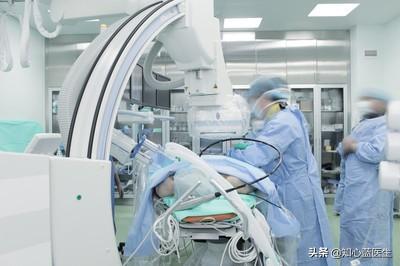
1. What is the role of coronary angiography?
(1) What is coronary heart disease:There are often patients who say that they feel uncomfortable in their chest or take the ECG report suggesting st-segment changes and ask if this is coronary artery disease. Coronary heart disease is due to coronary artery atherosclerosis, atherosclerotic plaque gradually become larger, the lumen gradually become smaller, when the lumen narrowing more than 50%, in the activities of the heart may be insufficient blood supply, resulting in angina pectoris symptoms, the electrocardiogram can be manifested as a change in the st segment.A preliminary diagnosis of coronary artery disease can be given to a patient by analyzing the patient's typical clinical symptoms as well as gender, age, and risk factors such as high blood pressure, high blood cholesterol, smoking, diabetes, and obesity. But there is no way for a doctor to tell you which coronary artery is blocked and by what percent, whether it is 50% or 90% blocked. If you need to further determine the extent of the blockage or to resolve a severe stenosis, then a coronary angiogram will be needed.

(2) Diagnosis of coronary heart disease:For experienced cardiovascular physicians, the diagnosis of coronary artery disease by the above methods is nine out of ten times accurate. Coronary angiography is the gold standard for diagnosing coronary artery disease as it can clearly visualize the blockage of the coronary artery. Of course, for some patients, coronary CTA can also be used as an alternative.
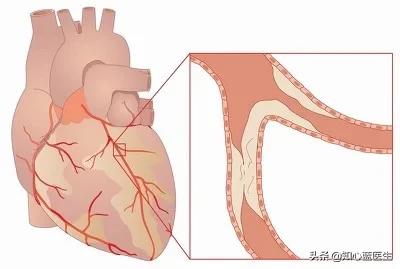
(3) Treatment of coronary heart disease:In severe types of coronary artery disease, such as patients with anterior descending stenosis of more than 75%, or patients with sudden myocardial infarction, necessary therapeutic measures, such as dilatation or stenting, may be given in conjunction with coronary angiography to treat or prevent the infarction.
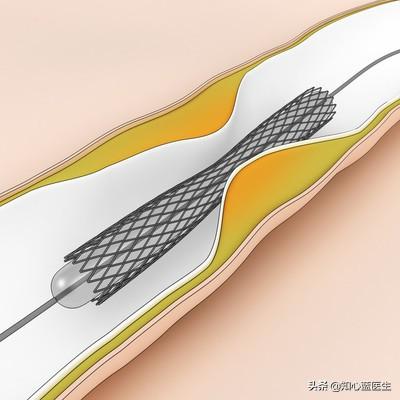
2. How is coronary angiography done?
(1) Do the parts:In most cases, the vessel of choice for coronary angiography is the radial artery (at the wrist), or the femoral artery (at the root of the thigh) when the vessel at the wrist is not in good condition and cannot be operated.
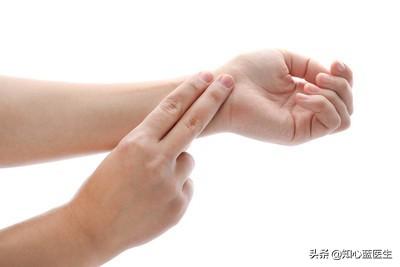
(2) Specific steps: the patient lies flat on the operating bed in the cardiac catheterization laboratory, the operation site is disinfected (hands or thighs), local anesthetics in this area, with a needle in the arterial vasculature to poke a hole in the arterial vasculature, sent to the thin guidewire and catheter, in the X-ray under the supervision of the catheter, the guidewire catheter along the blood vessels can be reached in the coronary arteries, and then in the head of the thin catheter injected with a kind of drug (contrast agent), so that the The blood vessels are shown under the X-ray, and the size of the blood vessels, how they go, whether they are blocked or not, can be seen at a glance, as well as the left and right coronary arteries, and the various branches, etc. If the problem is not serious, then this will be the best solution. If the problem is not serious, then this is the end, pull out the catheter, the wrist puncture place with a compressor pressure to prevent bleeding. The whole process takes 10-30 minutes if you are skillful. If the problem is severe, then treatment (balloon dilatation, stenting, etc.) may continue and take longer.
3. What are the dangers of coronary angiography?
Some patients say right away that I want to have a coronary angiogram. Of course, he must know that coronary angiogram can diagnose coronary heart disease. However, I would like to remind you that coronary angiography is an invasive test and carries risks. Don't look at the test procedure I have written above, which is simple and easy to perform, but where are the risks? Let me tell you what we have encountered or what other doctors have reported:
(1) Vascular injury:The vascular puncture just mentioned above, the guidewire catheter going inside the blood vessel, and the imaging inside the coronary artery all have the potential to damage blood vessels, such as bleeding, infection, arterial entrapment, arteriovenous fistula, and arterial occlusion.
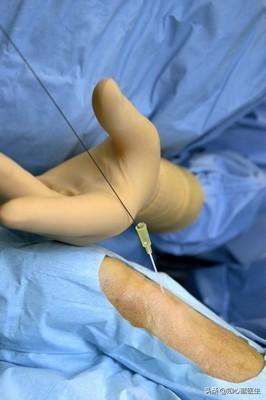
(2) Allergies:It was mentioned above that injections of contrast media, contrast media are allergic to some people, mild rashes, itchy skin, and severe anaphylactic shock can occur, which is rare.

(3) Kidney damage:The contrast medium is excreted through the kidneys, and it is possible to damage the kidneys or even develop kidney failure, especially if you have kidney disease, which is of course rare, but as a doctor, you must be told truthfully.
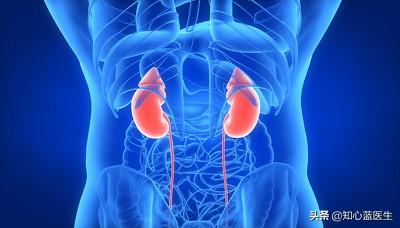
(4) Radiation:The process of imaging is the process of X-ray photography, which is subject to ionizing radiation, so pregnant women, unmarried men and women should be more cautious.
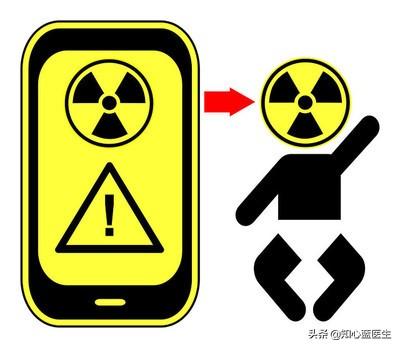
4. What to look for?
(1) For doctors: strictly select the indications, do contrast only for patients whose condition requires it, and don't use contrast indiscriminately. Skillful operating techniques and care at every step can reduce time and risk. Risk anticipation, prevention and active treatment of possible complications.

(2) For patients:
Coronary angiography alone is not as big and invasive as a surgical procedure, and the short operation time is actually very little trauma to the patient.
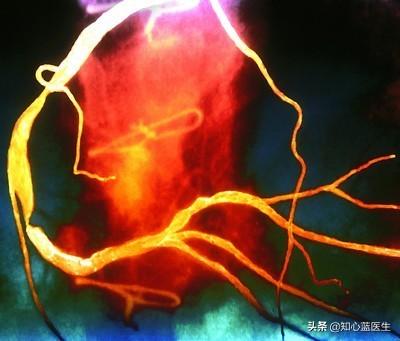
Under normal circumstances, you can get out of bed and walk after doing it (thigh puncture can not walk). The hand compressor needs to be compressed for 6 hours, the thigh compression time should be longer 12 hours, two hours after the imaging compressor can be a little loose, pressure is too tight hand is very painful, will be swollen, the hand purple, to observe the puncture port will not ooze blood. There are no special circumstances, the next day can be discharged from the hospital, the work to work. If the problem is serious, it's a different story.
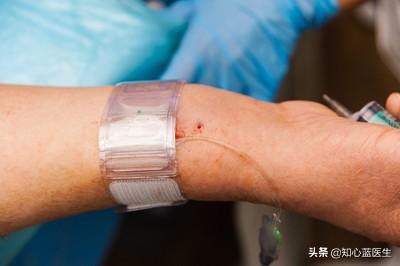
To drink more water, increase urination, so that the contrast agent is excreted faster, of course, heart failure and kidney failure or will not be able to drink more water, it can not be excreted, it will aggravate the burden on the heart.
Don't move your arm too much or too hard after releasing the compression band, and for a short period of time (2 weeks), don't lift heavy objects with the pierced hand.

In conclusion, coronary angiography in the diagnosis and treatment of coronary heart disease has a very large, irreplaceable role, although the technology is now very mature, the incidence of these risks mentioned above is very low, but it is after all invasive examination, the risk exists. The principle is, the condition of the patient needs, there is nothing to worry about, should be done, the benefits outweigh the disadvantages, especially in the event of a heart attack, hesitate to miss the opportunity to rescue; the condition of the patient does not need to be done, do not just do, a waste of money, take the risk, but also suffer, the disadvantages outweigh the benefits.
Concerned about Knowledgeable Blue DoctorsBorn.Learn more about heart disease.
Electrocardiogram, echocardiogram and cardiac imaging are three tests that we will often encounter in our normal life, and which one to do, of course, should need to be guided and chosen by our doctors according to the patient's situation.But whichever one you do, be warned, there is no substitute for all three tests, which is to say that just because you have an EKG doesn't mean you don't need an echocardiogram, a cardiogram.Because all three tests have their own advantages and characteristics of their own tests。
for exampleelectrocardiographyThe main purpose is to check the electrophysiological activity of the heart, to see if there is sinus arrhythmia, tachycardia, bradycardia, or premature beats, arrested beats, etc. It can be said to be the most basic examination in terms of the heart, and sometimes it can detect some of the potential diseases of our heart;
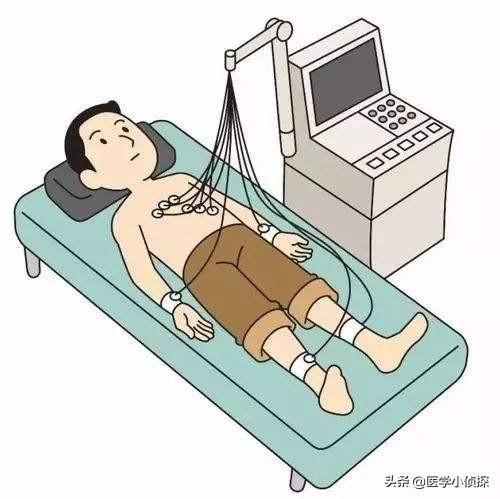
而echocardiographyThe focus is to look at the structure of our heart, the blood inside, the hemodynamics, and to see if there are any abnormal shunts in terms of velocity, differential pressure, and direction of blood flow.
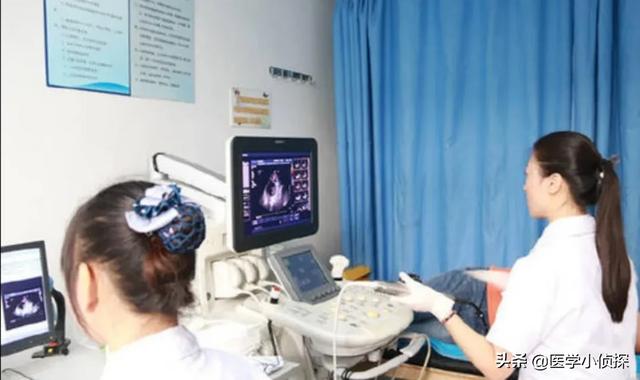
In conclusion, we saycardiographyWhat does it do? A cardiogram is a coronary angiogram of the heart.Although it can't see the soft tissue of our heart, it can diagnose some cardiac diseases and evaluate some pressure changes between the chambers and arteries of our heart through a special way of visualizing abnormal contrast signals.It is most commonly used in the diagnosis of our coronary heart disease and can be considered the gold standard for coronary heart disease diagnosis!
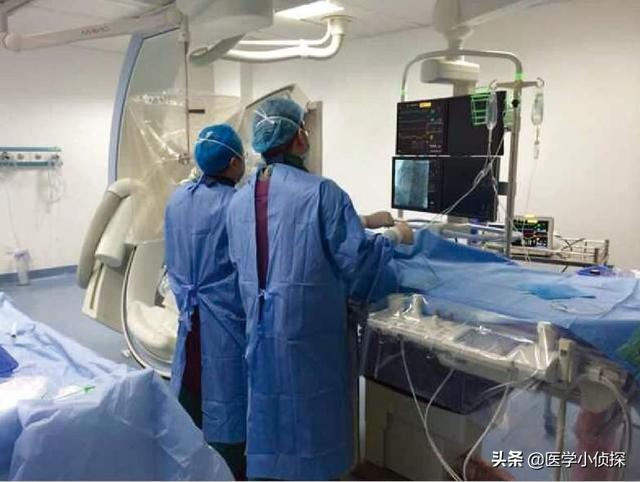
So, everyone whoTo have a complete heart checkup, it's definitely not just a matter of doing any one test that is the complete solutionEach test has its advantages and characteristics, the main direction of the test, depending on what the patient is, what symptoms he has, what diseases need to be excluded, it is best to choose on the advice and guidance of the doctor.
Today I'm going to talk to you mainly about cardiac imaging, which many people love and hate, why is that?
First of all, unlike the EKG and echocardiogram that we talked about before which are non-invasive tests, cardiac imaging is invasive, and by invasive I mean that it is an invasive way of examining the blood vessels of the heart!
How do you trespass?
Because imaging, certainly, involves injecting a certain amount of contrast medium into the coronary vessels of our heart, and then we can observe the chambers of our heart as well as the blood vessels, etc., under our X-ray irradiation.Then at this point we have to find an opening where we can pump contrast into the coronary arteries of the heart, and this process of opening the opening is classified as an invasive operation!
present .Over 95% of patients go from the radial artery in the wristThe doctor inserts a hose from the radial artery into the opening of the coronary artery and delivers it to the opening of the coronary artery of the heart, then opens the contrast medium and irradiates it with an X-ray, so that the blood vessels of the heart can be clearly seen, and our doctor, by observing the development of the image, will be able to judge whether the arteries of the heart are narrowed, whether there is any blockage, and, if there is blockage, how much blockage there is. From this, we can determine whether we have coronary heart disease or other heart diseases!
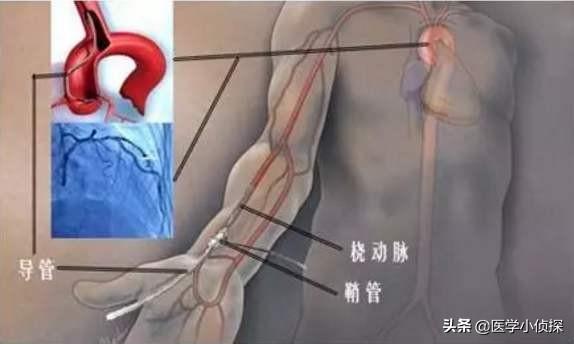
However, if our doctors feel that your condition is more complex through other tests of your heart or clinical symptoms, then we have to consider doing this insertion from the femoral artery of the patient's thigh.
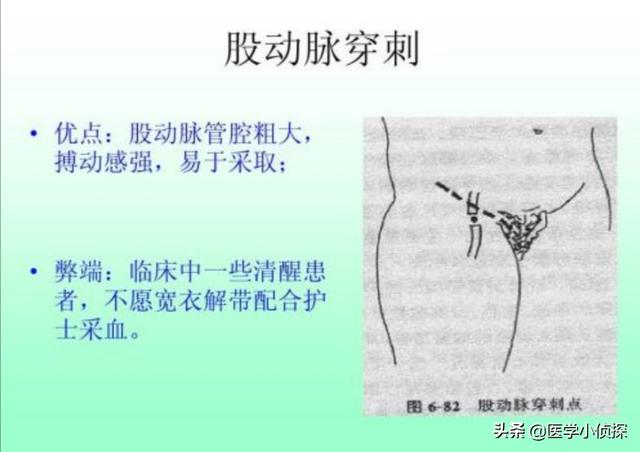
And this kind of requires the patient to practice lying on the bed to go to the bathroom before the test is done, because this cardiography, especially if it's done through the thigh arteries, as it is, is a minor procedure.You will need to stay in bed for a few days after the surgery, especially if you are just finishing up and can't walk.Because arterial bleeding is not like our usual venous bleeding.Once a large artery like the femoral artery bleeds, it's still more problematic, and arterial bleeding is one of those pressurized, jet-like ones!
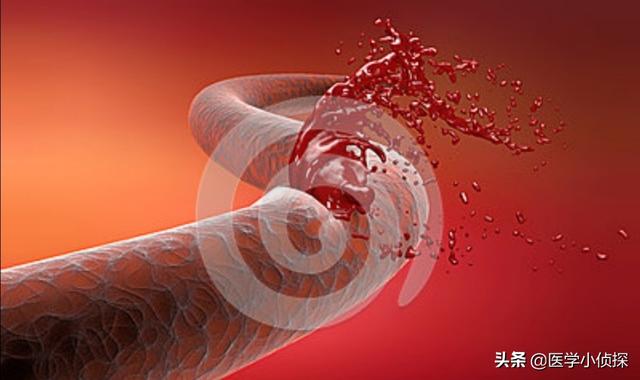
So, again, theThe arteriogram is done through the radial artery vessel in the hand, and although it does not require bed rest like when we do it for the femoral artery, it also requires hospitalization to do it, and you need to watch the vessel after it is done to see if it will bleed, and when you are sure that it will not bleed, then you can move around normally.Of course, it doesn't stop you from doing other things at this time.
So, let's say a person needs to rest for how long before having a cardiogram?
This, thoughIt's not so dramatic that we'd have to recuperate for a while, like we usually do with surgery.The heart is not a heart, but it is a matter of which artery is chosen. But still, it depends on the condition, the presentation of symptoms, the specific choice of which artery and the choice of cardiography done, whichThere are still post-operative precautions to be takenI'm not sure if you want to have a cardiogram or not! Because I just mentioned, cardiography is a kind of invasive examination, not you say you want to do cardiography on the do, have to meet the symptoms of coronary artery disease, have to do this situation, our doctor will recommend, and do the way there are two kinds of at present, one is through the radial artery, the trauma is relatively small, basically there is no special need for bed rest, and the other kind of cardiography through the femoral artery puncture, you need to lie in bed lying flat for two days to prevent bleeding from the aorta.
Because of this, when we doctors tell patients about the cardiography procedure, some patients will think that it is a little bit scary to think about inserting a tube directly into our blood vessels and whether it will be very painful; others will think that it is a little bit like stenting and will be afraid of having a coronary angiogram.
In reality it is all about not knowing too much about some of the details of the cardiac coronary angiography test.
First, in terms of the time it takes to do the exam, typically from the time the tube is inserted until the exam is done, theUsually not more than half an hour to finish, fast ten or twenty minutes, not at all what people think, it's pretty much the same as what people usually know about having surgery;
Secondly, the hose used for coronary angiography is very thin. You can look at your own surgical vessels and think about how thin the tube has to be to get in there;
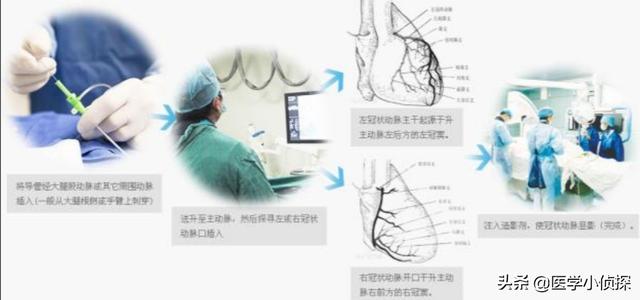
Thirdly, there are patients who are afraid of bleeding after the procedure, and then they are afraid to move their entire upper limbs, or even do not go down to the ground, resulting in stiffness and pain in the limbs. This is absolutely unnecessary.On the contrary, it may also increase the risk of thrombosis。
Cardiac imaging is a very mature test, there is no need to worry too much, for meeting the indications of the test is necessary to do, because it can not only confirm whether we have coronary heart disease, but also can be excluded from the false, while the suspected coronary heart disease to clarify!
So who is recommended to have this cardiogram?
- Frequently unexplained chest pain, arrhythmia, or cardiac insufficiency that cannot be diagnosed by noninvasive tests;
- Unexplained chest pain even after having a heart stent or bypass surgery;
- Prior to having surgery for some specific congenital heart disease, heart valve disease, etc;
- Some special occupations such as pilots, special vehicle drivers, etc. are suspected of having coronary heart disease although they are currently asymptomatic.
with respect tocardiographyIf you still have any questions, you can leave a message below, I adhere to the text we can understand, the most primitive way to bring you the best, the most comprehensive, the most practical health science and technology. If you think it's good, you can pay attention to the "medical detective" and forward yo, so that more people around the benefit!
Hello, I am a medical worker Zhang, a practicing physician, can popularize health knowledge for everyone, if you know more, pay attention to me!
In today's society, many people have problems with their heart and blood vessels, and the news frequently reports the sudden death or heart attack of a certain person. Heart diseases are closely related to our habits in life, and why the incidence of heart diseases is so high is inseparable from the changes in our lives. However, the examination of the heart can be observed from the non-invasive tests such as electrocardiogram, cardiac enzymes, cardiac ultrasound, and further invasive tests such as cardiac angiography. Nowadays, many people need to do coronary angiography, but hearing the doctor's description the public feels scared, can it be done or not? Is it dangerous?
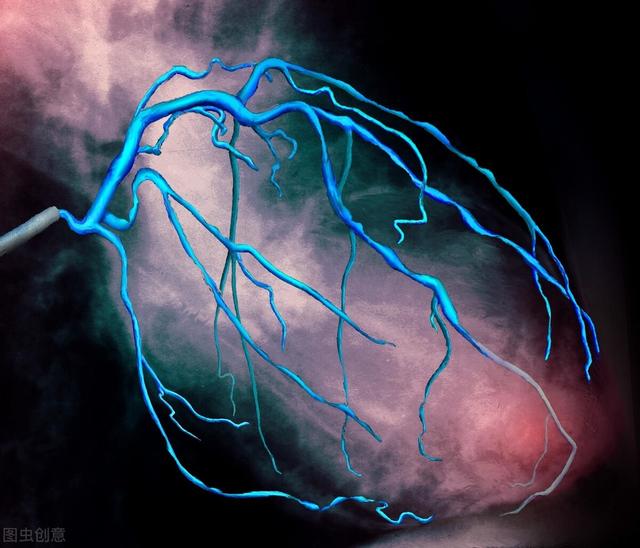
Let's look at what a cardiogram is.
A cardiogram is a test in which a very thin catheter is inserted into your aorta and a contrast agent is injected into the aortic bloodstream through a small opening in front of the catheter so that X-rays can show the pattern of the blood vessels and the heart that flow along the blood vessels in a display.
Role of cardiac imaging procedures
There are coronary angiograms and cardiac (atrial and ventricular) angiograms. Coronary angiography is to use a hair-thin catheter along the radial artery (wrist) or the femoral artery (thigh) of the artificial entrance to the heart of the coronary artery openings, and then injected into the coronary arteries of the contrast agent (in the X-ray), so that the shape of the coronary arteries can be shown, for example, to see if there is no narrowing of the coronary arteries, plaque, etc., but basically can not be understood through the examination of the heart shape of the main or to understand the internal shape and the rate of blood flow within the coronary artery, the heart. The main purpose is to understand the internal shape of the coronary arteries and the speed of blood flow within the coronary arteries.
Indications for cardiac imaging
With a clear clinical diagnosis of coronary artery disease, coronary angiography can further define the extent and degree of coronary artery disease and select a treatment plan.
1. Stable angina pectoris or old myocardial infarction with ineffective medical treatment.
2、Unstable angina pectoris, the first to take internal medicine active intensive treatment, once the condition is stable, active coronary arteriography; internal medicine drug treatment is ineffective, generally need to emergency imaging. For high-risk patients with unstable angina, mainly spontaneous, accompanied by obvious ST-segment changes on ECG and post-infarction angina, coronary angiography can also be performed directly.
For patients without complications of AMI, coronary angiography should be considered 1 week after the infarction, and patients with complications of AMI such as cardiogenic shock and septal perforation should be treated with revascularization with the help of assisted circulation as soon as possible. be treated with revascularization with the help of assisted circulation as early as possible. For patients who are highly suspected of AMI but cannot confirm the diagnosis, especially those with left bundle branch block, pulmonary embolism, aortic coarctation, and pericarditis, direct coronary angiography can be performed to clarify the diagnosis.
4. Asymptomatic coronary artery disease, of which coronary angiography should be performed in patients with a positive exercise test accompanied by obvious risk factors.
5. Imaging tests such as CT revealed or highly suspected moderate or greater coronary artery stenosis or the presence of unstable plaque.
6. Those with successful resuscitation from primary cardiac arrest and a greater likelihood of left main stem lesions or proximal anterior descending branch lesions are at high risk and should be treated with early intervention for vasculopathic conditions, requiring evaluation of the coronary arteries.
7. Recurrence of angina after coronary artery bypass grafting or PCI often requires reevaluation of coronary artery lesions.
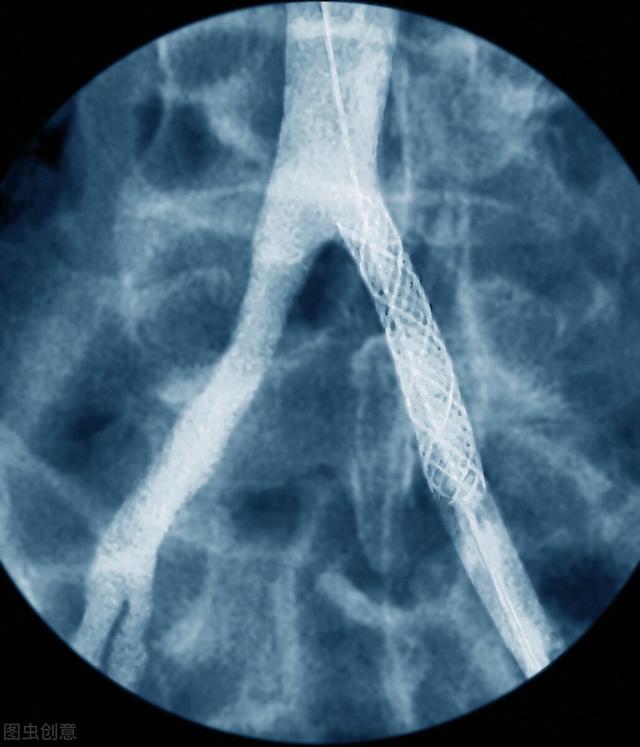
Is cardiography dangerous?
There is usually no problem in a tertiary hospital. Coronary angiography is a relatively mature technology, and there are about 1 million cases per year in China. The risk of simple imaging is very low, if you need to put a stent depends on the degree of coronary lesions, if the lesions are complex, the operation time is long, the corresponding risk will increase, the most serious risk is acute thrombosis or perforation during the operation, which may cause acute infarction, heart failure or sudden death, but the overall incidence is not high. A more common ( actually not very common) complication is a localized hematoma at the puncture site, but this can be absorbed over time. The imaging itself is not dangerous, but the procedure of inserting a tube from the femoral artery into the heart is, with the possibility of exacerbating atrial fibrillation, and the possibility of bleeding from the wound after the procedure.
Chorography is performed under local anesthesia, and there are no sensory nerves in the blood vessels and the heart, so the patient only feels a slight pain during local anesthesia, and the rest of the procedure has no obvious discomfort. After the procedure, patients need to lie down for 18-24 hours, some patients may feel pain and discomfort in the lower back, but the symptoms will disappear after getting up and moving around. Complications may occur during any procedure, therefore, patients are asked to sign before the procedure. The complication rate of coronary angiography is 0.2%~0.9%, mainly: (1) arrhythmia. (2) Local bleeding, hematoma, pseudoaneurysm and arteriovenous impotence. (3) Acute myocardial infarction. (4) Allergy to contrast media. Most of the above do not constitute serious consequences, and the complication rate of skilled operators is extremely low.
How long do I have to rest after a cardiogram?
Cardiology patients who do cardiography, from admission to discharge generally in about five days, the first day of admission to check a variety of indicators, indicators in line with the arrangement of the operation can be arranged in about two to three days, and then queuing up to do half a day to a day, if the cardiography is not a big problem, observation of 24 hours can be discharged, if the cardiography is done in the morning, then the next day in the afternoon you can be discharged. Just don't do any heavy labor for a week after you go home.
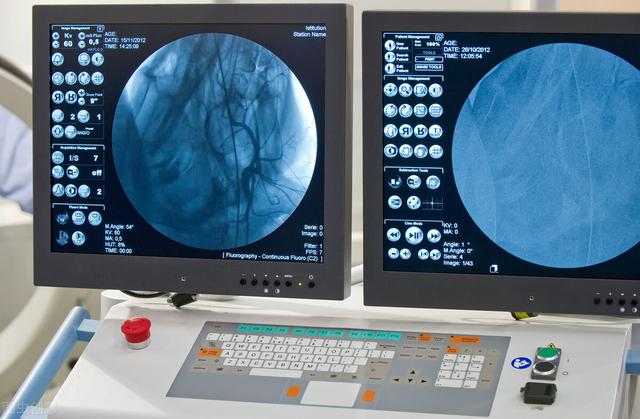
Conclusion: Coronary angiography is a very low-risk, relatively safe, and virtually painless procedure. Nowadays, many hospitals can perform coronary angiography via radial artery, and patients who undergo coronary intervention via radial artery can have the arterial sheath removed immediately after the operation, and the radial artery can be compressed for 4-10 minutes, and then pressurized and immobilized for 3-6 hours. Patients can go down to the ground at will immediately after the operation. In foreign countries, if there is no stent put in this kind of patients can not be hospitalized, but China requires hospitalization for observation.
The amount of time you need to rest after a cardiogram is determined by how harmful the test is to your body and whether or not there is a risk, on the one hand, if the risk is high, you will need to rest longer, and if there is a risk, you will need to wait until the risk period has passed. So how harmful is a cardiogram to the body and what are the risks? Let's talk about it today.
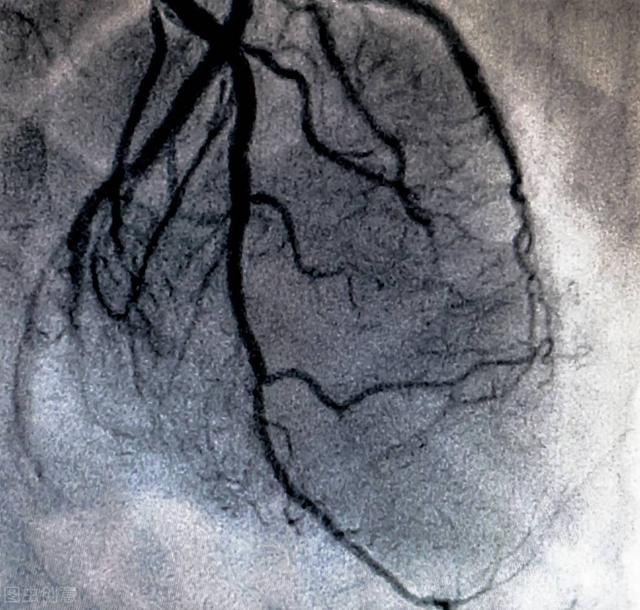
What is cardiography?
The cardiac imaging test currently referred to is mainly a coronary angiogram of the heart, which is the gold standard for checking the coronary arteries. The coronary arteries are important arteries supplying blood to the heart. You may have heard of heart attack or myocardial ischemia, which is largely due to problems in the coronary arteries, and coronary artery angiography allows us to see the coronary arteries and to know whether the arteries are stenotic or blocked, and is also known as the gold standard for checking the coronary arteries. This test is also known as the gold standard of coronary artery examination. Especially for severe coronary atherosclerosis, this test is needed to evaluate the degree of stenosis and to determine whether a stent needs to be put in.
A cardiac imaging test involves inserting a very thin catheter into your aorta and injecting contrast material into the aortic bloodstream through a small hole in the front of the catheter.
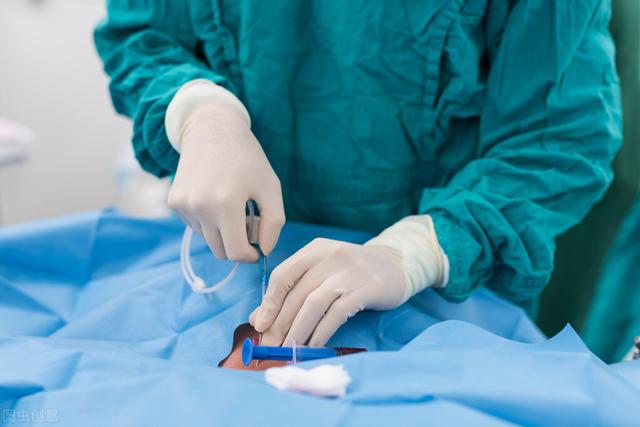
In order to understand the dangers, as well as the risks we have made the examination process specific enough for you to be able to understand it!
It is a puncture from the radial artery of the hand or the femoral artery at the root of the thigh, the catheter will be sent along the arterial blood vessels, has been extended to the coronary arteries, injected into the contrast agent, the contrast agent will be mixed with our coronary arteries of the blood, filled with coronary arteries, the blood vessels in the X-ray is not visible, but after the injection of the contrast agent, can be visible under the X-ray, we will be able to observe the situation of blood vessel to see the situation of blockages, stenosis, plaque! We can then look at the image to see if there is any blockage, stenosis, or plaque!
Knowing the exact process of the test, let's talk about the risks!
Dangers of cardiography
Point 1: Allergy to contrast media
Allergy to contrast media may occur occasionally, and some patients may develop allergy after the injection of drugs, showing common allergic manifestations such as itching and rashes, and in severe cases, anaphylactic shock may occur. However, in general, such cases are not rare, and the doctor is always with the patient during the examination, so even if it happens, the doctor will be able to detect it in time and deal with it accordingly.

Point 2: Damage to blood vessels
This is an invasive procedure in itself, and the catheter has to travel a long way through the blood vessels, where bumps and bruises are inevitable, but dangerous injuries are rare, so don't worry too much about this point.
Point 3: Hematoma at the puncture site
Because the puncture is an artery, it takes a relatively longer period of time for the opening after arterial puncture to heal. During this period, if there is blood seepage from the puncture on the artery, there will be hematoma under the skin, or even bruising, which is the focus of care after the puncture.
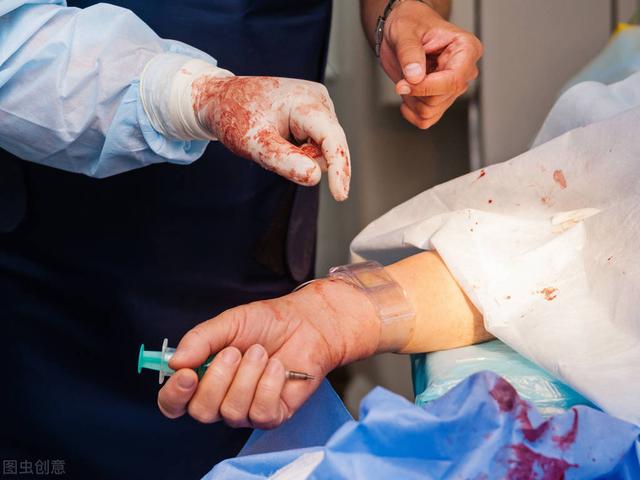
Point 4: The danger of contrast media to the kidneys
It is impossible to suck out the contrast medium after it enters the bloodstream, we need our body to metabolize it, and the metabolizing process needs our kidneys to participate. But you don't need to worry too much, for the general public is no problem.
Point 5: Radiation
Radiation is unavoidable during the examination because it is developed through X-rays. Many people worry about the dangers of radiation. It's just that you don't have to worry too much, radiation can be harmful. But the examination of the operation of the doctor is present, the doctor's work every day to receive these radiation, you check the day to receive these radiation, to say how much harm, then also the doctor is the most tragic. You check to receive radiation is to save lives, the doctor is just a job, you weigh it!
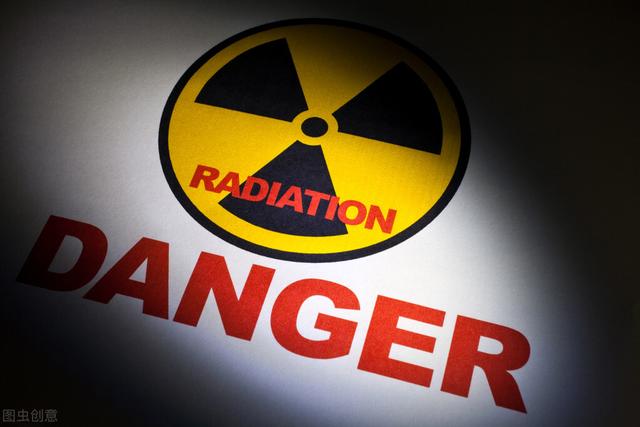
How long do I need to rest for a cardiogram?
As you have found out from the above, this is a not so invasive test, so bed rest is a must. Be sure to keep pressure on the puncture site, after the tube has been removed.Normally, you can get out of bed and walk when you're done (you can't walk with a thigh piercing). The hand compressor needs to be compressed for 6 hours, and the thigh compression time should be longer 12 hours. According to the blood seepage situation to see the specific compression time, in the bleeding decreased or pain and swelling can be appropriate to relax the compression, if there are no special circumstances in general the next day can be discharged, if there are other situations on the other hand.
The various hazards and risks mentioned above may cause problems for you who are about to undergo this test, or need to undergo this test, but please don't worry too much, the current test technology is very skillful, as long as we actively cooperate with the doctor to carry out the test, it is still relatively safe, and heart problems may endanger our lives, it is the most important thing to complete the test and treatment as early as possible.
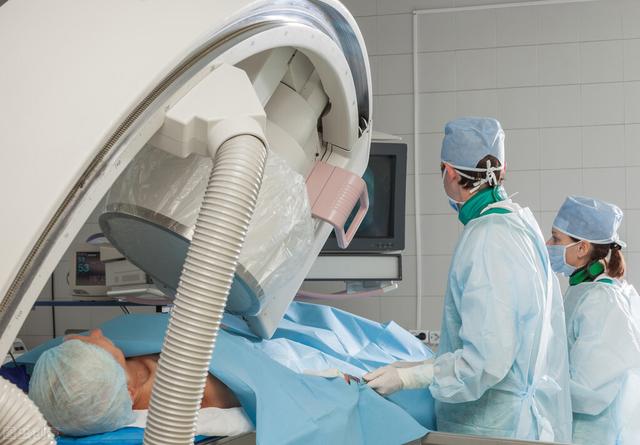
After cardiography, drink plenty of water, do not engage in strenuous activities, do not stay up late, eat a light diet, avoid stimulating foods, and emotional excitement. Go to the hospital for follow-up immediately if any discomfort occurs.
Thank you for reading, I hope my answer can be of some help to you, if you think it's not bad, please give me a like and then share it out, if you can also give me a concern, I think it must be the biggest support for me, thank you!
Cardiography is a minimally invasive procedure, and most patients can be discharged the next day after the procedure; exactly how long they need to rest depends on the following
1. Condition of the puncture site
Now the vast majority of patients coronary angiography is performed through the radial artery, that is, in the wrist puncture placement of the sheath, after the operation only requires the wrist does not bend can be, the second day of the wound is not obvious bleeding, the wrist can be normal activities.
A small percentage of patients undergo imaging from the femoral artery, which is a puncture at the base of the thigh to place a sheath, and recovery is relatively slow, with the ability to get off the floor the next day and a gradual increase in activity. If there is bleeding or a hematoma in the wound, recovery takes a little longer.
It should be reminded that whether the operation is performed from the radial artery or femoral artery, a considerable number of patients will have subcutaneous bruising near the puncture point. If the bruising is not extensive or not progressively enlarged, there is no need to worry about it, and the bruising will be completely absorbed in about 1 to 2 weeks.
2. Renal function
Elderly patients, patients with underlying renal disease, or patients with a long history of diabetes mellitus and hypertension, the use of contrast media during the imaging process may have some impact on the kidneys, and the urine output and indicators of renal function should be closely observed after the procedure.
3. Coronary artery lesions
If the coronary artery has no problem or the problem is very mild after the imaging, basically, you can return to normal work and life after resting for two or three days. If you have an acute infarction, or if your coronary artery disease is very serious, or even if you can't put in a stent or can't do a bypass graft, you need to rest for at least 2-4 weeks before you can cautiously increase your activity level.
In conclusion, how long you need to rest after imaging varies from person to person and you need to follow the advice of the doctor in charge.
Cardiography, which should be called coronary angiography to be precise, is an important means of diagnosing and treating coronary artery disease. Through the peripheral radial artery or femoral artery and guided by a guide wire, a stent is placed into the narrowest point of the coronary artery, which in turn dilates the blood vessel and relieves ischemia, hypoxia and necrosis.
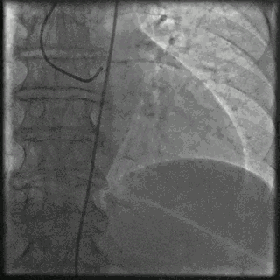
Since cardiac stenting is an operation performed in the arteries, a compression bandage needs to be applied to the puncture site after the procedure to prevent postoperative bleeding. In case of radial artery puncture, care should be taken to avoid movement of the puncture hand for at least 6 hours after the operation to avoid bleeding. In case of femoral artery puncture, since the femoral artery is a large artery with high intravascular pressure, it is necessary to take bed rest for 12 to 24 hours after the operation and avoid getting out of bed for exercise.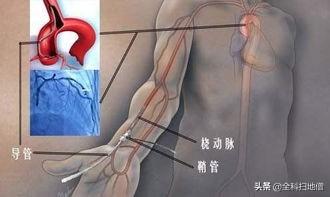
Of course, we can do appropriate activities after removing the compressor, when in the month after the operation, it is still necessary to avoid substantial physical activities, and should be rested to facilitate the recovery. If the degree of intraoperative coronary artery stenosis is less than 50%, it is considered as coronary atherosclerosis; while if it is more than 50%, it is diagnosed as coronary artery disease; and if the degree of stenosis is more than 75%, it is one of the indications for the placement of cardiac stents.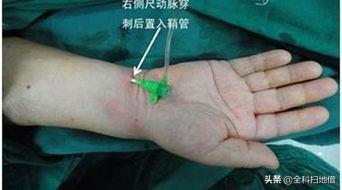
The indications for stent implantation are coronary artery stenosis of more than 75% or frequent angina attacks or acute myocardial infarction, which need to be placed or not after comprehensive assessment of the condition under the guidance of a professional doctor. Once the stent is implanted, it is necessary to insist on improving the life style and taking medication regularly, and pay attention to the monitoring of the condition changes and regular review, and if necessary, implanting a stent again or undergoing coronary artery bypass grafting surgery to stabilize the control of the condition and reduce the occurrence of complications. If necessary, re-implantation of stent or coronary artery bypass surgery should be performed to stabilize and control the disease and reduce complications.
This article has been written by GP Sweeps and we hope it has been helpful. Please correct any deficiencies, the article is for reference only and is not intended as medical advice.
Coronary angiography is a minimally invasive procedure that is now commonly performed and is very safe. Because it is minimally invasive, there is no need to take a few days off work to recover, as is the case with surgical procedures, and you can walk almost as soon as it is done.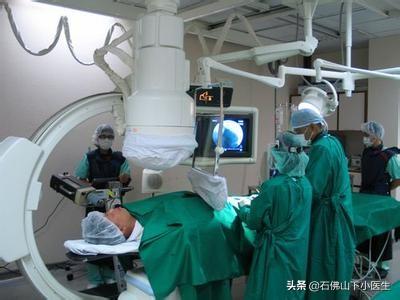
I. On access to imaging procedures
Currently there are two main types of access for imaging, the radial artery (in the hand) and the femoral artery (at the base of the thigh). Nowadays, the most used entry is mainly from the hand. Unless there is a problem with the blood vessels in the hand, some of them are naturally narrow; others have had so much imaging that the arteries have become very narrow.
The advantage of radial artery access is that it is easier to stop the bleeding with postoperative compression, and the compressor in the hand is usually removed after about 6 hours to stop the bleeding.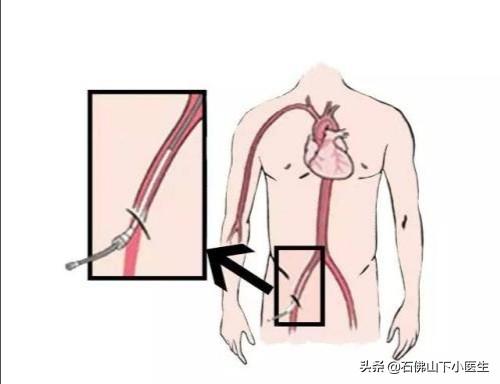
Femoral artery access is usually done in bed for about 12 hours because the blood vessels at the base of the thigh are thicker and cannot be easily compressed to stop bleeding.
At my hospital, I am usually discharged the next day after simple imaging.
II. Timing of coronary angiography
If it's just a simple imaging, it's quick, about half an hour from the time you go into the operating room to the time you come out. If a stent is required, that time is impossible to tell.
III. On the excretion of contrast media
Coronary angiography is needed to hit the contrast agent, the contrast agent is also very easy to excrete. As long as there is no problem with kidney function and drink more water after the procedure, it can be excreted soon.
How long should I rest after a cardiogram? When it comes to the question of how long to rest after a cardiogram, different doctors have different recommendations. Some say that after it is done you are normal and there is no need to rest, while others say that you should rest for a long time. So, how exactly should we recognize this problem? I will give you some personal opinions.
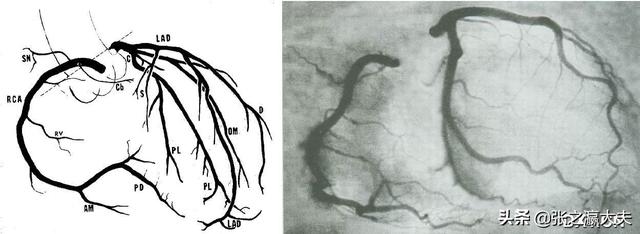
It should be said that for all patients with coronary artery disease, as well as those with suspected coronary artery disease, they do not know how long they should rest after coronary angiography. In fact, this situation also depends on the specific situation. For example, if this patient is a patient with acute myocardial infarction, after coronary angiography as well as intervention, he may need to rest for a longer period of time, and may not necessarily be able to move around right after the procedure, but may need to rest for 1-2 weeks. And for some patients whose coronary angiogram suggests that the coronary stenosis is not severe, or even that there is no coronary artery disease, the patient really doesn't need further rest after the procedure. However, after all is said and done, I still want to remind everyone to pay attention to the coronary angiography puncture place, do not rush to use the coronary angiography puncture place for activities after the operation, for example, nowadays there are more coronary angiograms done through radial artery puncture, once the coronary angiogram is done in this place, after the operation, no matter who is in the place, should pay attention to less activities in this place, especially excessive stretching in this place is even more inadvisable, and should pay attention to letting this place recover for 1-2 weeks before activities. It is important to allow the area to recover for 1-2 weeks before moving it.
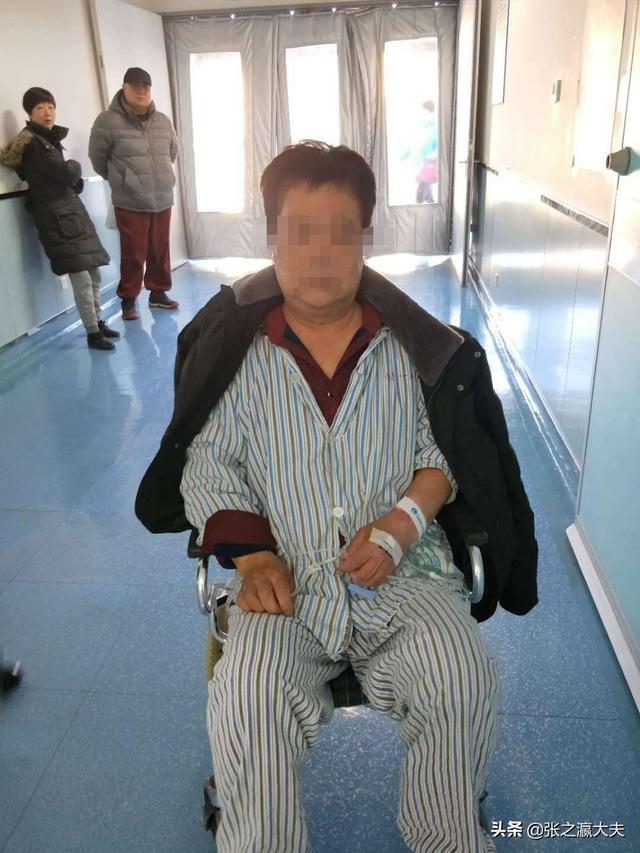
There is a lesson in saying this, I myself once had a patient who always had chest tightness and a coronary angiogram revealed only a slight mild lesion in the coronary vessels, nothing serious. The patient was discharged from the hospital on the 3rd day after the operation, and the radial artery puncture recovered quite well after discharge, but on the 5th day after discharge, the puncture arm of the coronary angiogram was used to carry a heavy object, which resulted in a tear at the punctured radial artery, and the radial artery bled severely, and the patient was hospitalized again for treatment. Although I recovered later, I still think that this kind of thing can be avoided with a few more days of rest, so why do you need to be in such a hurry to move the arm of the coronary angiogram puncture so vigorously.
In fact, there is no fixed answer to the question of how long to rest after cardiac coronary angiography, and this question varies from person to person and cannot be generalized, because it involves the specific condition of the patient. As for the puncture site of coronary angiography, we try to avoid too early postoperative stretching activities, try to let him recover a little firm in the activities, you say?

With the increase in the incidence of coronary heart disease and the increasing skill of cardiologists in mastering the technique of coronary angiography, more and more people are undergoing cardiac angiography. Even so, people still have no idea about coronary angiography, and there are even a lot of people who don't know anything about it at all. That's why the questioner mentioned such a question, how long should I rest after cardiography? Let's go into the mysterious coronary arteriography today and answer the questioner's question.
I. What is cardiography?
To be precise, a cardiogram is called a coronary angiogram, mainly because the blood vessels supplying the heart are called coronary arteries. Coronary angiography is an invasive test, it refers to the use of catheters along our peripheral arteries, mainly around the arteries into the after, through a certain way to send the contrast catheter to the opening of the coronary arteries, and then through the contrast catheter pushes in a certain amount of contrast medium, so that the heart's coronary arteries to develop, so as to determine the existence of coronary arteries, as well as to guide the coronary arteries of how to further treatment of a significant This is the so-called coronary angiography.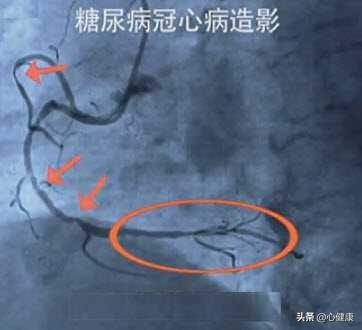
Second, is cardiography complicated?
With the advancement of technology, coronary angiography has become a very popular test. A skillful operator can complete the imaging in less than 10 minutes, which shows that coronary angiography of the heart is not very complicated. Even so, there are still some exceptions to the rule of thumb where a more complex coronary angiogram takes longer and requires more effort to complete. But the vast majority of coronary arteriograms are relatively simple and carry very little risk of harm.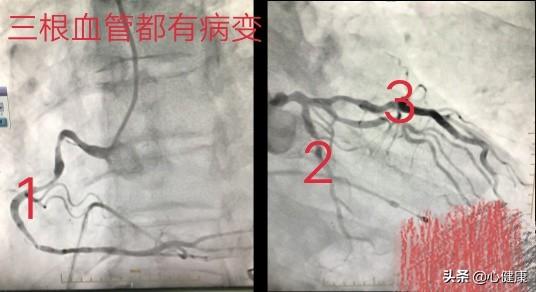
Third, how long do I have to rest after cardiography?
Coronary angiography is a relatively common, commonly used, and simple test in many places, and is even used as part of day surgery in some hospitals. In our hospital we have many patients who have day surgery, no need to check into the hospital, if there are no problems after the test, they go straight away. So if everything is normal and there are no complications, the vast majority of patients can be as normal as they are on the second day after the coronary angiogram is done. However, if there is a problem with the imaging that requires further treatment, then the patient may need to take reasonable rest, medication, and continued treatment for the condition.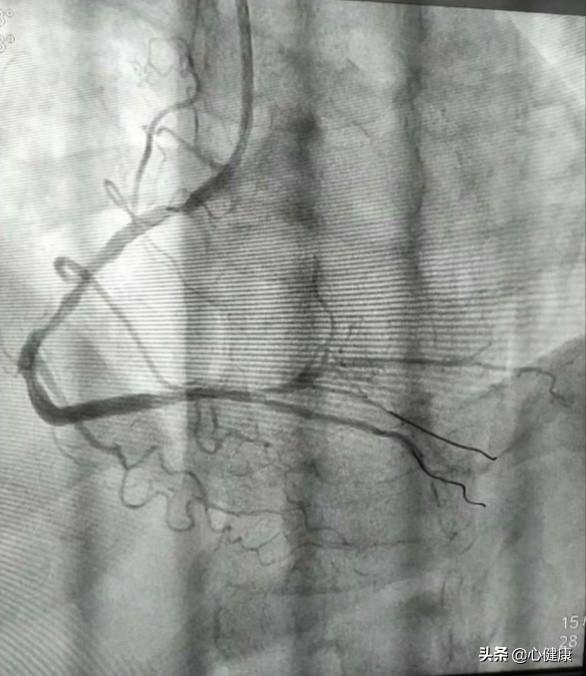
Coronary angiography is not as scary as it seems and not everyone needs it, it has indications and contraindications! See what I mean? Follow us for daily updates on science.
This question and answer are from the site users, does not represent the position of the site, such as infringement, please contact the administrator to delete.